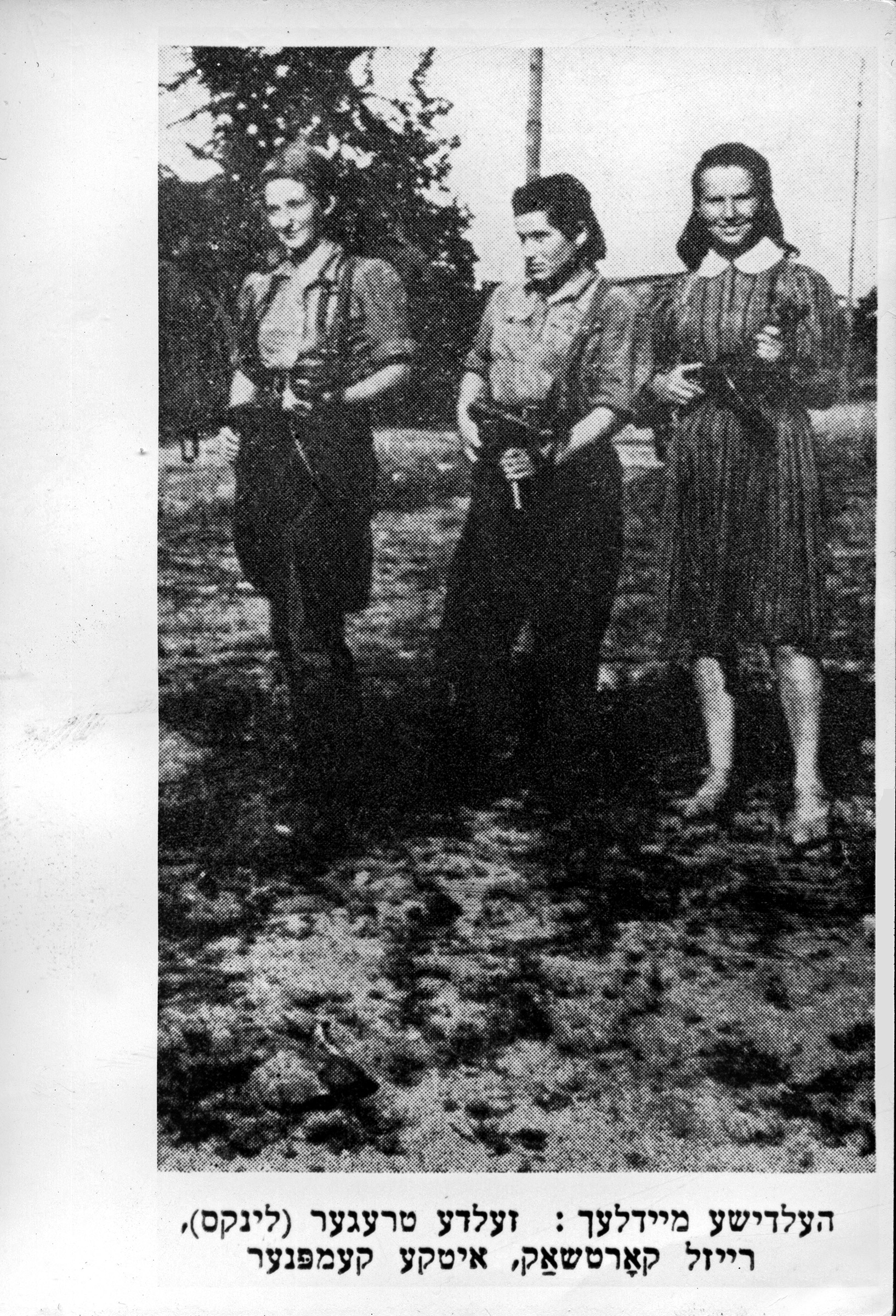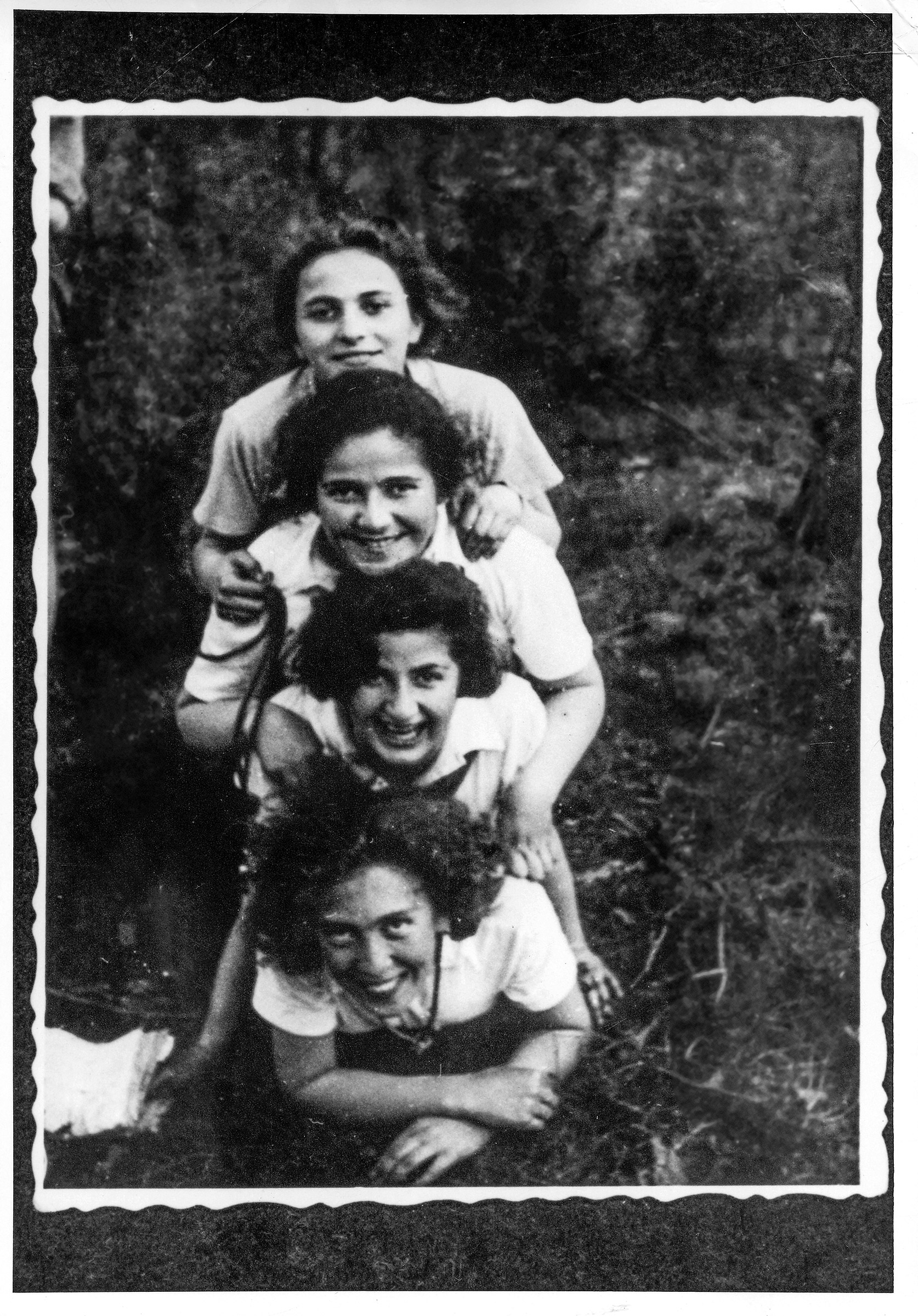
On Yom Hashoah, we light memorial candles and mourn the dead. But which narratives of the Holocaust do we recall? Why have certain stories predominated our understanding while others have seemingly vanished?
Some 14 years ago, I decided to research the life story of Hannah Senesh, a young Hungarian Jew who lived in Palestine but joined the allied forces to return to Europe and fight the Nazis. She was the only person I’d ever heard of who volunteered to return and fight Hitler. But soon into my sleuthing, I happened to come across a 1946 anthology about dozens of young Jewish women who took similar risks. As I learned more about these Jewish female ghetto fighters, forest partisans, and “courier girls”—who dyed their hair blonde, took off their star-of-David armbands, and secretly slipped in and out of ghettos, smuggling information, false Aryan papers, and pistols, bullets, and grenades in marmalade jars, sacks of potatoes, and designer handbags—I marveled equally at these stories and their obscurity. Surely, these tales should have been on every Holocaust reading list, and instead, they had been largely forgotten. Thus, my research became double-layered: on the one hand, what is the story of Jewish women in the resistance; on the other hand, what happened to this story? Over a decade, I learned many reasons why the tale of Jewish female resistors fell to the footnotes. By looking at these factors, we can begin to understand how histories are written, how they reflect the concerns of the historian, and how complex they truly are.
The social and intellectual zeitgeist played a role in sidelining tales of the Jewish resistance in the narrative of the Holocaust. Immediately post-war many of these stories were shared and even published. The longest piece in Women in the Ghettos was a personal tale by Renia Kukielka, an 18-year-old who in 1943 smuggled weapons, cash, fake IDs, and people from Warsaw to the provinces—she became the central character in my book. She’d published a book-length memoir in Hebrew in 1945, which had been popular among the Jewish community in Palestine; it was excerpted into Yiddish in Women in the Ghettos then fully translated to English in 1947 with a foreword by a founder of Brandeis University. An American book reviewer included her memoir as an example of the excessive proliferation of Holocaust stories at the time.
Over the decades, however, stories like Renia’s dissipated among trauma fatigue, and then a fascination in Auschwitz and the death camps. In the bohemian 1970s, reports of violent rebellion were erased in favor of a focus on “resilience” and spiritual resistance. Later, a barrage of Holocaust literature drowned out earlier titles.
More recently, in the U.S., where so many millennials don’t know what Auschwitz is, and the memory of the genocide is fast fading, some people are hesitant to talk about armed Jewish resistance. They fear that highlighting fighters makes the Holocaust look “not that bad.” They also fear that glorifying resisters places too much focus on agency, implying that survival was more than luck, judging those who did not take up arms and ultimately blaming the victim.
Political forces have also shaped how Holocaust narratives are constructed, and this differs among countries and communities. In his 2017 book Saving One’s Own, Mordechai Paldiel, the former director of the “Righteous Among the Nations” department at Yad Vashem, the Holocaust Remembrance center in Israel, claims that he was troubled by the fact that Jewish rescuers never received the same recognition as their Gentile counterparts. He compiled this 585-page tome of Jews who organized large-scale rescue operations across Europe. Along with other scholars I interviewed, he suggests that a myth of Jewish passivity was perpetrated by Israel’s early politicians. They upheld the idea that European Jews were weak and that the new Israeli Jew was strong, which helped build morale for a developing country. In Poland, where in the past years, the government has tried to shape the Holocaust narrative by law, stories from the war and resistance, in particular, have been emphasized or downplayed based on political allegiances with communists, Soviets, and Polish nationalists.
Politicians used Hannah Senesh’s story to promote certain narratives of Israel’s history—this is one reason she became more well known. The Jewish community in Palestine was accused of not having provided enough help to European Jews. Senesh, who’d joined the Allied forces, became a poster child showing that they did. But Senesh was not the only female to fight. Haviva Reich was also a paratrooper; she’d convinced an American pilot to blind-drop her in Slovakia, where she organized shelter for thousands of refugees, rescued Allied service members, and helped children escape. Senesh, however, was a poet—young, beautiful, and from a wealthy family. Reich was a brunette divorcee in her 30s with a checked romantic history.
Women, in general, had long been left out of Holocaust narratives. The reasoning: feminists should not politicize the story. In the 1980s and 1990s, however, scholars argued that the female experience differed from men’s and was a valid area of study. For many years, memoirs and personal accounts were considered unreliable source material. Much Holocaust scholarship was based on “objective” Nazi records, which certainly didn’t contain discussions of rebellious young girls. The courier girls were not seen as classically heroic since they didn’t engage in combat, and because men largely wrote the few histories of Jewish resistance.

Renia herself did not promote her book; if anything, writing down her tale was therapeutic. She channeled her torment into words. After this catharsis, Renia felt able to move on, to start afresh. Silence was a coping mechanism for many of these women. They thought it was their duty to create a new generation of Jews and wanted their children to live “normal, happy” lives. Many of these female rebels were not believed, accused of sleeping their way to safety, or blamed for abandoning their families to fight. Women felt judged according to a lingering belief that while the pure souls perished, the conniving ones survived. Others suffered debilitating survivor’s guilt. So often, when their vulnerable outpourings were not received with empathy, women turned inward and repressed their experiences.
On the pragmatic side, researching historical women can be particularly tricky. Writing my book on these women, The Light of Days, required working with a multitude of languages and monikers. These rebel women had Polish, Hebrew, and Yiddish names, as well as nicknames. Some had a wartime alias. After the war, they got “faux married” for emigration papers, thus changing their names, and then, they changed them again to suit the languages of the countries where they ended up. Then, there, they got “real married,” altering their names yet again. “Renia Kukielka Herscovitch” (or possibly Irena Kukelko Herskovitch or Renata Kukilka Neumann Herzcovitz) has endless English permutations. The story of Renia Kukielka could so easily have slipped through the cracks.
But it didn’t. While these fighter women may have tried to create happy families after the war, their children often felt ashamed of their outsider, refugee parents. It often took until my generation, the 3Gs, to feel pride in this legacy, to ask our “grandmothers” about their lives. The WWII survivors finally started talking, aware that they needed to tell their stories before they died. Now, interested in hidden women’s histories, we publish books based on these late-in-life conversations and ruminations. These tales lurking under the surface are finally springing to the fore, jumping from the footnotes to the main text, making herstory.
Batalion is the author of The Light of Days: The Untold Story of Women Resistance Fighters in Hitler’s Ghettos and the memoir White Walls
More Must-Reads From TIME
- Dua Lipa Manifested All of This
- Exclusive: Google Workers Revolt Over $1.2 Billion Contract With Israel
- Stop Looking for Your Forever Home
- The Sympathizer Counters 50 Years of Hollywood Vietnam War Narratives
- The Bliss of Seeing the Eclipse From Cleveland
- Hormonal Birth Control Doesn’t Deserve Its Bad Reputation
- The Best TV Shows to Watch on Peacock
- Want Weekly Recs on What to Watch, Read, and More? Sign Up for Worth Your Time
Contact us at letters@time.com